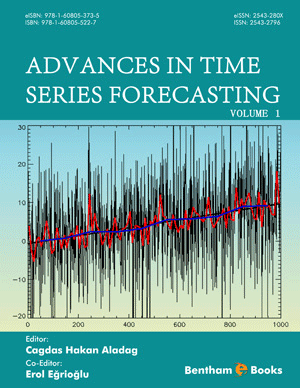Complex Numbers, Variables and Functions
Page: 3-28 (26)
Author: S. G. Ahmed
DOI: 10.2174/9781681080420115010002
PDF Price: $15
Abstract
The complex numbers and the complex functions are main topics to go through the complex analysis. The complex analysis is a wide topic found in many areas of pure, applied and engineering applications. Therefore, many authors have tried to put their experience in this field that ignored by others. The present chapter aims mainly to cover some basic concepts for the beginners in the field of complex analysis, such as concept of complex number, idea of complex number, algebraic operations and more.
Complex Functions
Page: 29-60 (32)
Author: S. G. Ahmed
DOI: 10.2174/9781681080420115010003
PDF Price: $15
Abstract
This chapter is an introduction to the theory of analytic functions of single variable. No one can understand the basic concepts of integration without passing through analytic functions. It will be so difficult starting deeply with such functions but the reader should first start from the basic definitions and then slowly develop the ideas of complex analysis to the point that considered the bases to deeper topics such as Cauchy's theorem and the Riemann mapping theorem.
Methods of Evaluating Complex Integrals
Page: 61-101 (41)
Author: S. G. Ahmed
DOI: 10.2174/9781681080420115010004
PDF Price: $15
Abstract
Complex integration is an important topic in the field of complex analysis. There exist some related criteria between the integration in the real and complex functions. We will start this chapter, by introducing a short review for the line integration in the real domain then followed it by the subject of the present chapter. Theorems, corollaries and other facts will be introduced. After that we now turn to the problem of integrating complex functions. The theory you will learn is elegant, powerful, and a useful tool for physicists and engineers.
Complex Series
Page: 103-116 (14)
Author: S. G. Ahmed
DOI: 10.2174/9781681080420115010005
PDF Price: $15
Abstract
Mathematicians considered the contents of the present chapter continuity of the previous chapters. The last chapter was taking about theories of evaluating complex integrals. Herein, we will continue this subject, but firstly we focus the lights on some definitions and theories that are usually useful in studying theory of residues.
Theory of Residue
Page: 117-147 (31)
Author: S. G. Ahmed
DOI: 10.2174/9781681080420115010006
PDF Price: $15
Abstract
You have now the necessary machinery to see some amazing applications of the tools that we had developed in the last few chapters. You will learn how Laurent expansions can give useful information concerning seemingly unrelated properties of complex functions. You will also learn how the ideas of complex analysis make the solution of very complicated integrals of real-valued functions as easy – valued functions as easy – literally – as the computation of complex integrals. The topic of our discussion in this chapter is one of the most important and most often used tools that applied scientists extract from the theory of complex variables. Residue theory is employed in a wide variety of applications ranging from the evaluation of real integrals to the stability of linear systems to image evaluation in photographic science. In this chapter, we develop and illustrate some of the fundamental techniques employed in complex integration by the use of residue theory.
Transformation and Conformal Mapping
Page: 149-193 (45)
Author: S. G. Ahmed
DOI: 10.2174/9781681080420115010007
PDF Price: $15
Abstract
In complex analysis, a function preserves angles if and only if it is analytic or anti-analytic the conjugate of an analytic function. In the present chapter, we will deal with the transformation and conformal mapping, let us start this chapter, by introducing the meaning of the word "Conformal", then introducing some basic definitions for both mapping and transformation. Question: what does it mean by the word conformal? The answer is quite simple, the word conformal means preserving angle of the shape after transformation at a certain point.
Introduction
Complex Analysis for Science and Technology is a textbook for undergraduate and postgraduate students undertaking science, technology, engineering and mathematics (STEM) courses. The book begins with an introduction to basic complex numbers, followed by chapters covering complex functions, integrals, transformations and conformal mapping. Topics such as complex series and residue theory are also covered. Key features of this textbook include: -simple, easy-to-understand explanations of relevant concepts -a wide range of simple and complex examples -several figures where appropriate












